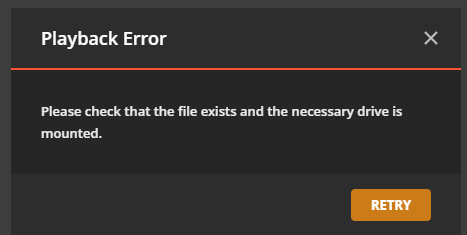This guide creates a reverse SSH tunnel to route all Plex server traffic through it.
Step 2 is done on the tunnel, all other steps are done on the plex server.
On plex server:
1a. Create SSH key
root@ubuntu:~# ssh-keygen -t rsa
Generating public/private rsa key pair.
Enter file in which to save the key (/root/.ssh/id_rsa):
Created directory '/root/.ssh'.
Enter passphrase (empty for no passphrase):
Enter same passphrase again:
Your identification has been saved in /root/.ssh/id_rsa.
Your public key has been saved in /root/.ssh/id_rsa.pub.
Passaphrase must be empy for autossh to work!
1b. Copy SSH key
root@ubuntu:~# ssh-copy-id root@TUNNELIP
/usr/bin/ssh-copy-id: INFO: attempting to log in with the new key(s), to filter out any that are already installed
/usr/bin/ssh-copy-id: INFO: 1 key(s) remain to be installed -- if you are prompted now it is to install the new keys
root@TUNNELIP's password:
Number of key(s) added: 1
Now try logging into the machine, with: "ssh 'root@TUNNELIP'"
and check to make sure that only the key(s) you wanted were added.
1c. Connect to tunnel
root@ubuntu:~$ ssh root@TUNNELIP
Welcome to Ubuntu 16.04.1 LTS (GNU/Linux 4.9.7-x86_64-linode80 x86_64)
Last login: Wed Feb 22 03:49:58 2017
root@ubuntu:~#
You should not be promted for a password
2a. Add "Gatewayports yes" to sshd_config
root@ubuntu:~# nano /etc/ssh/sshd_config
Change:
...
Port 22
...
To:
...
Port 22
GatewayPorts yes
...
2b. restart sshd
sudo service ssh restart
3a. Install autossh
sudo apt install autossh
3b. Create systemd service file
sudo nano /etc/systemd/system/autossh-plex-tunnel.service
Contents:
[Unit]
Description=AutoSSH tunnel service Plex on local port 32400
After=network.target
[Service]
Environment="AUTOSSH_GATETIME=0"
ExecStart=/usr/bin/autossh -M 40584 -o "compression=no" -o "[email protected]" -o "ServerAliveInterval 30" -o "ServerAliveCountMax 3" -NR 32400:localhost:32400 root@TUNNELIP
User=changeme
[Install]
WantedBy=multi-user.target
sudo systemctl enable autossh-plex-tunnel
sudo systemctl start autossh-plex-tunnel
4b. Check SSH tunnel
sudo systemctl status autossh-plex-tunnel
If tunnel was created successfully output should look something like this:
autossh-plex-tunnel.service - AutoSSH tunnel service Plex on local port 32400
Loaded: loaded (/etc/systemd/system/autossh-plex-tunnel.service; enabled; vendor preset: enabled)
Active: active (running) since Mon 2017-02-20 03:11:14 CET; 2 days ago
Main PID: 32570 (autossh)
CGroup: /system.slice/autossh-plex-tunnel.service
├─32570 /usr/lib/autossh/autossh -M 40584 -o compression=no -o [email protected] -o ServerAliveInterval 30 -o ServerAliveCountMax 3 -NR 32400:localhost:32400 root@TUNNELIP
└─32574 /usr/bin/ssh -L 40584:127.0.0.1:40584 -R 40584:127.0.0.1:40585 -o compression=no -o [email protected] -o ServerAliveInterval 30 -o ServerAliveCountMax 3 -NR 32400:localhost:32400 root@TUNNELIP
Feb 20 03:11:14 Hetzner systemd[1]: Started AutoSSH tunnel service Plex on local port 32400.
Feb 20 03:11:14 Hetzner autossh[32570]: starting ssh (count 1)
Feb 20 03:11:14 Hetzner autossh[32570]: ssh child pid is 32574
go to http://TUNNELIP:32400 on your browser, if it does not load the tunnel was not setup correctly
Plex.TV Web App > Settings > Server > Network > Custom server access URLs
https://TUNNELIP:32400,http://TUNNELIP:32400
sudo iptables -A INPUT -p tcp -s localhost --dport 32400 -j ACCEPT
sudo iptables -A INPUT -p tcp --dport 32400 -j DROP
sudo iptables-save > /etc/iptables.rules
edit /etc/network/interfaces
Change
auto eth0
iface eth0 inet static
address xxx.xxx.xxx.xxx
To:
auto eth0
iface eth0 inet static
pre-up iptables-restore < /etc/iptables.rules
address xxx.xxx.xxx.xxx

Step 6 and 7 will block access through the port unless it's being established through the tunnel. You need to access Plex through the tunnel address and not from where you have Plex hosted. Step 5 ensures Plex is doing this as well, you would be getting red if it can't establish a connection.